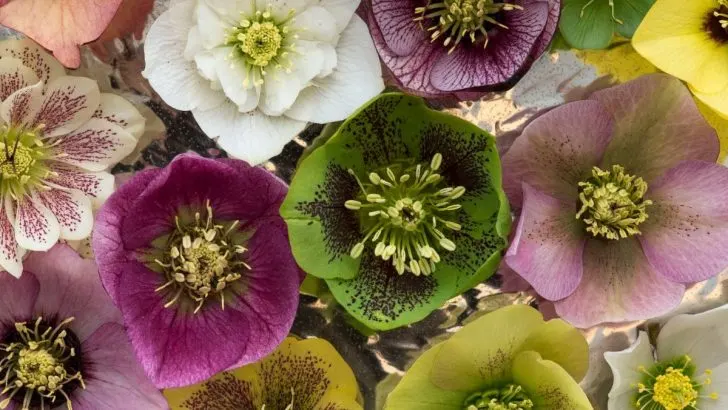Today we’re talking about 13 lovely perennials that bloom all summer long. Spring and summertime is the perfect time for colorful flowers that will keep blooming.
After reading this article, you’ll have a perennial garden in the early summer, even in the late spring. Nothing is more beautiful than flowering perennials.
Once you learn which flowers will produce flowers in the summer, you’ll have lovely pale yellow blooms, violet-blue flowers, and white flowers in the full sun location in your garden.
Prepare flower beds because your flowers bloom this summer. Let’s learn all about these flowers so you can choose a long blooming perennial for your garden.
What Is The Longest Blooming Perennial?
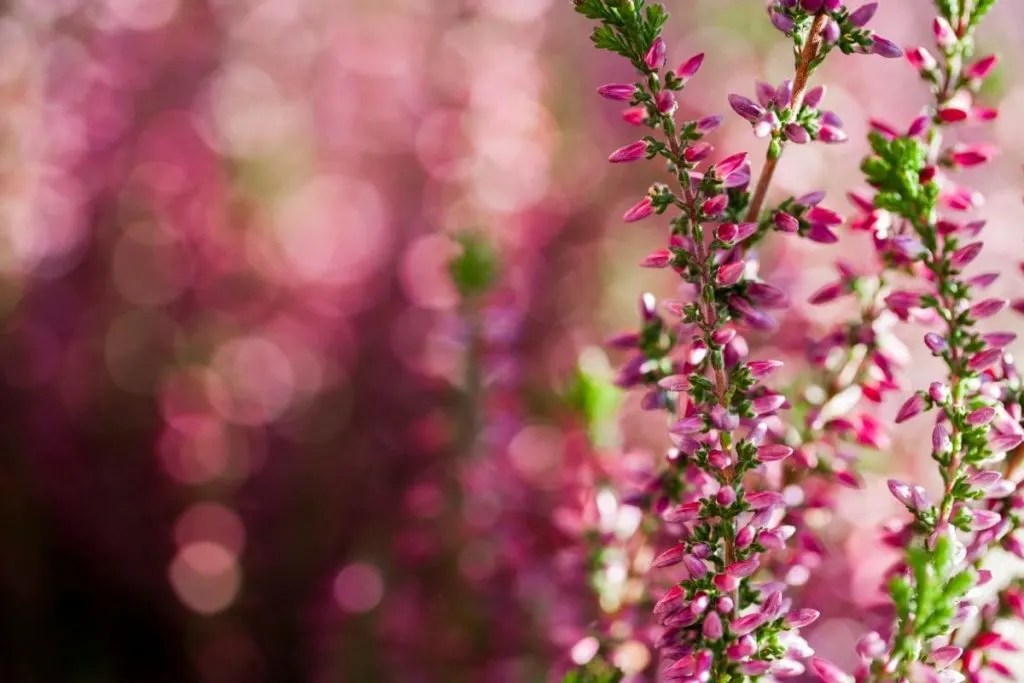
Catmint flowers and lavender are considered the longest-blooming perennial plants. These flowers are planted in the early springtime and they last until early fall/early autumn.
If you want a 100% sure long flowering period go with these tough plants. Their bloom period is more than fascinating and they have a wonderful fragrance.
What Is The Easiest Perennial To Grow During Summer?
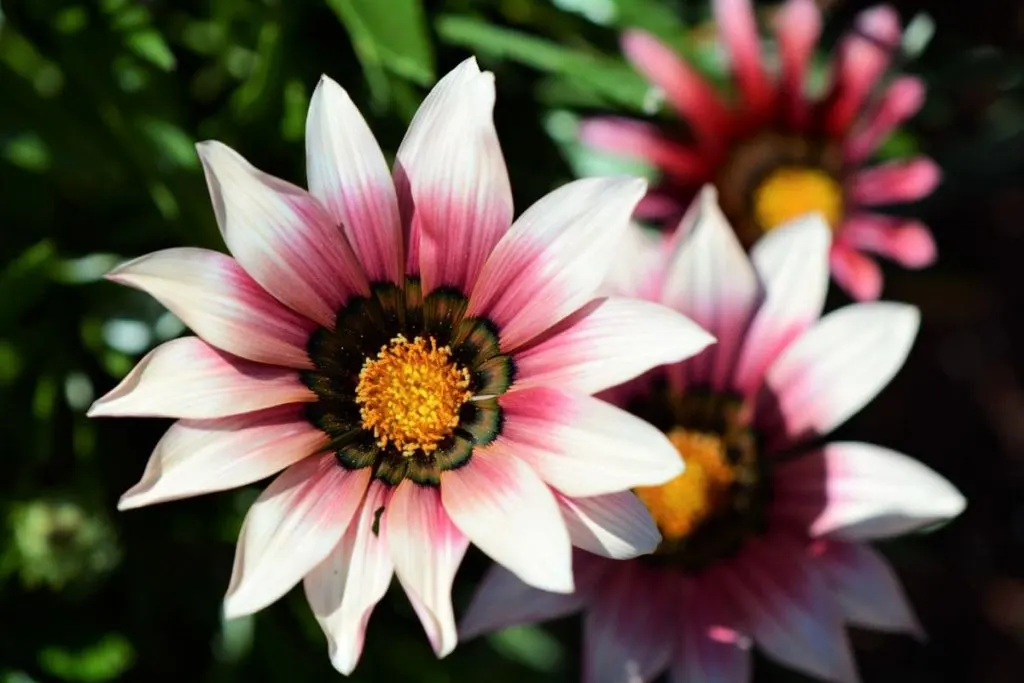
Sedum, peony, iris, and lily flowers, along with other plants that are similar are the easiest perennials to grow.
No matter which amazing plant you choose, in summer months you’ll have full blooms and you won’t even notice you’re taking care of them.
Low-maintenance flowering perennials in your summer garden might be the best thing that will happen in your garden this season, right?
13 Perennials That Bloom All Summer
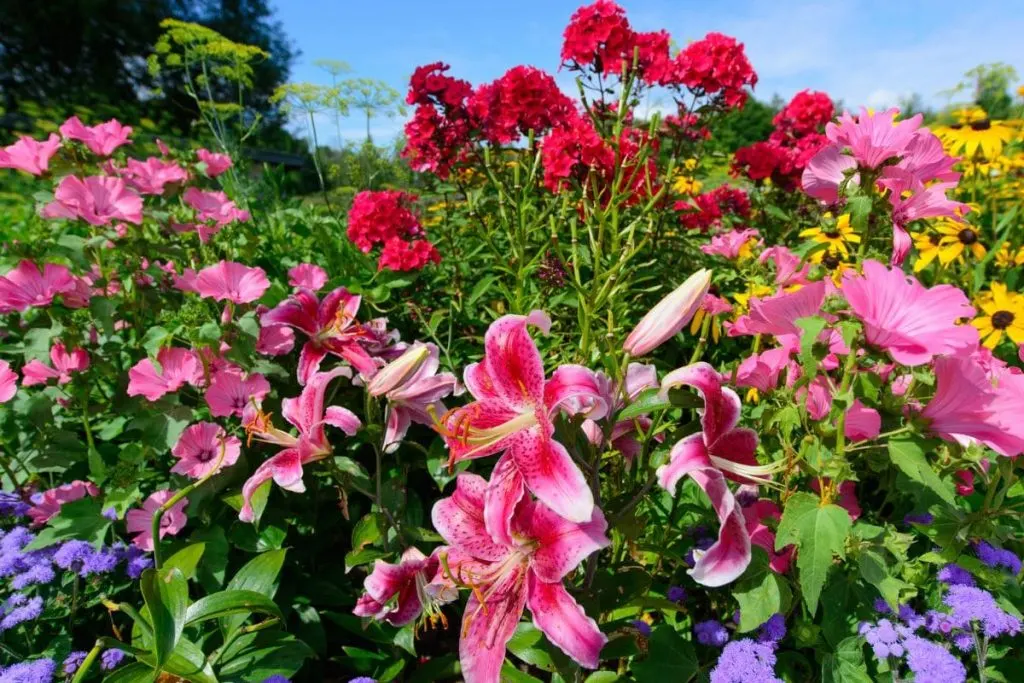
Extremely attractive flowers can also be very low maintenance believe it or not. Many perennials are like this. Deep shade, and moist soil and that’s basically all they need. You don’t even have to cut flowers.
If you want gorgeous blooms in your garden such as blue lupine, black-eyed Susan, and yellow hollyhocks, all you need is a sunny garden with shade.
Below we bring you 13 perennials that bloom all summer long.
1. Ice Plant – Perennials That Bloom All Summer
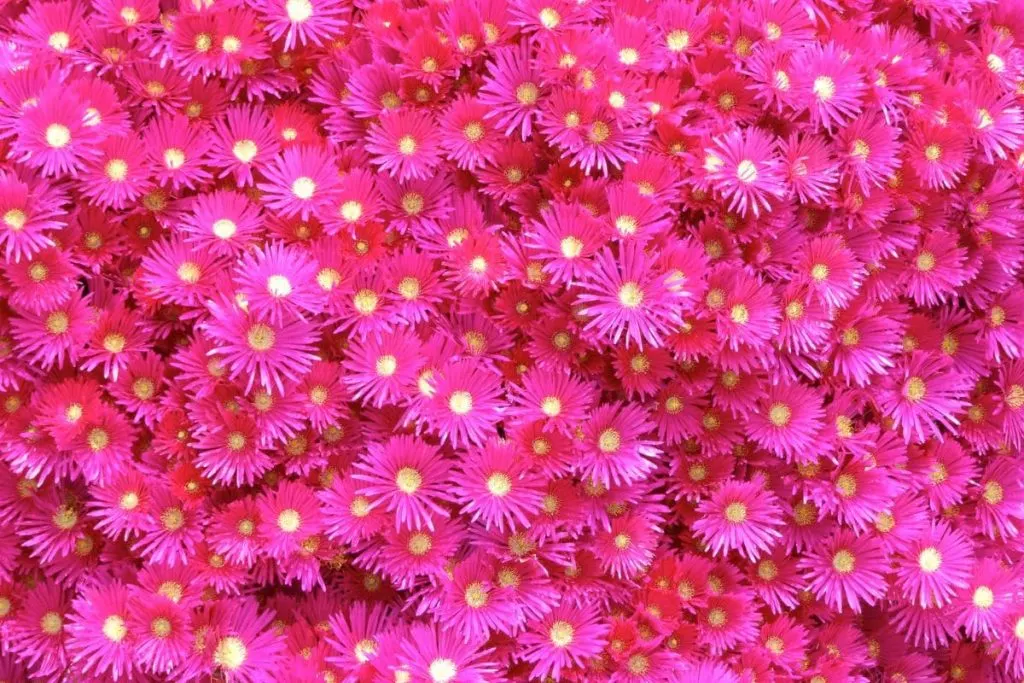
Aizoaceae plant is a gorgeous flower very similar to the purple coneflower with its care guide. If you want more flowers with vibrant colors in your garden, ice plants should definitely be your choice. They usually grow in a form of low-height shrubs. Flowers fade in the early fall. They are also rabbit resistant.
- Light conditions – If you want to provide your ice plant with the best light conditions, choose full sun conditions in the morning and shade in the afternoon. It attracts beneficial insects in its bloom time.
- Watering schedule – These flowers don’t need much water. They are one of the low-maintenance plants for your perennial garden. Tapwater or rainwater, it doesn’t matter as long as you water them once in 10 days. They are drought tolerant but not for long like large succulent plants. If you’re not sure what to do after drought time, learn how to flush plants without overwatering them then.
- Soil type – They like black soil, perlite, and peat moss. Well-draining soil is desirable in its blooming season so you can repot them just before the blooming season.
- Temperature – They prefer temperatures between 55 and 70 F. They don’t like cold temperatures and don’t stand frost well either. They hate sudden temperature changes so be careful when moving them inside for example.
- Humidity – Humidity levels are the best if they’re medium-50% to a maximum of 60%.
- Propagation – This plant is propagated by divisions, plant cuttings, and seeds. The most popular way and effective is from division.
- Fertilizer – Ice plant doesn’t require fertilizer.
2. Shasta Daisy
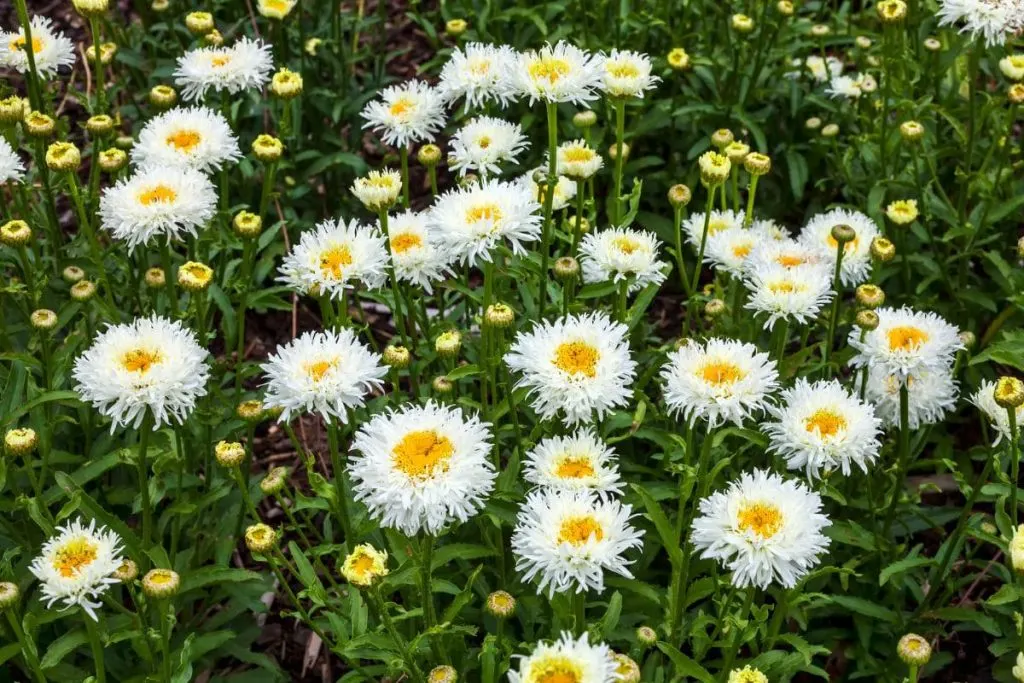
Leucanthemum × superbum is a lovely white-yellow plant that can be a great plant for your balcony or your yard. Just like the ice plant and some types of azaleas they grow in shrub shapes. Their maximum height is around 4 feet. They are the perfect border bush for your garden.
- Light conditions – Combine bright indirect light with partial shade and your daises will bloom all summer. Their flower heads are breathtaking when they have the right light treatment. If you remove its spent flower, in the right sun conditions it will bloom even more.
- Watering schedule – Water them once every 10 to 12 days. When watering, it would be a smart idea to remove deadhead flowers/deadhead spent flowers. Rainwater works the best for these plants.
- Soil type – Soil type isn’t a big question mark for these plants. They will manage in any soil type as long as it’s well-drained during hot temperatures.
- Temperature – They grow well in continental climates more than in tropical climates. The best temperature ratio would be between 55 and 65 F.
- Humidity – The best humidity levels are between 40 and 50%.
- Propagation – Just like ice plants, daisies are propagated by division, from seeds, and from plant cuttings.
- Fertilizer – Daisy plants don’t have to be fertilized at all.
3. Hibiscus – Perennials That Bloom All Summer
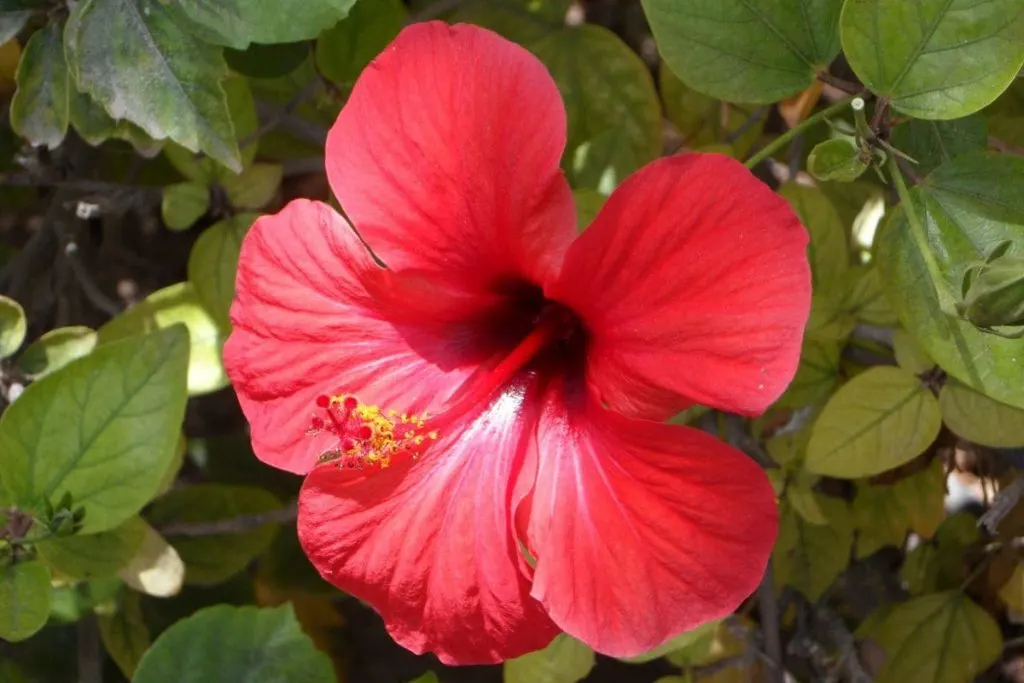
Coming from a Malvaceae family, the Hibiscus plant is an amazing vibrant red perennial that will keep blooming the entire summer season.
Hibiscus plants are native to tropical Asia. Their maximum height is 6 feet and the ratio is usually between 3 to 6 feet. Their dark pink and red color will be a breath of fresh air in your perennial garden.
- Light conditions – When planted outside it grows well in the direct morning sun and bright indirect light in the afternoon. However, the hibiscus indoor plant grows better in direct sunlight for the entire day. It is not one of the plants that can grow under artificial light.
- Watering schedule – As always, we like to remind you that when watering plants, that’s the best opportunity to get rid of spent flower heads to make your plant grow better. Water the hibiscus plant once per week with tap water. To avoid droopy leaves, always do a finger-check.
- Soil type – The best soil type for the hibiscus plant is loamy and sandy soil. Well-drained soil as well.
- Temperature – They grow best in temperature ratio between 65 and 89 F. This plant doesn’t stand frost or cold temperatures.
- Humidity – Hibiscus plants like humidity. They can survive in humidity levels up to 70%.
- Propagation – The best and most popular way of propagation hibiscus plant is by division.
- Fertilizer – The best fertilizer for your hibiscus is 10-10-10 fertilizer.
4. Perennial Geranium
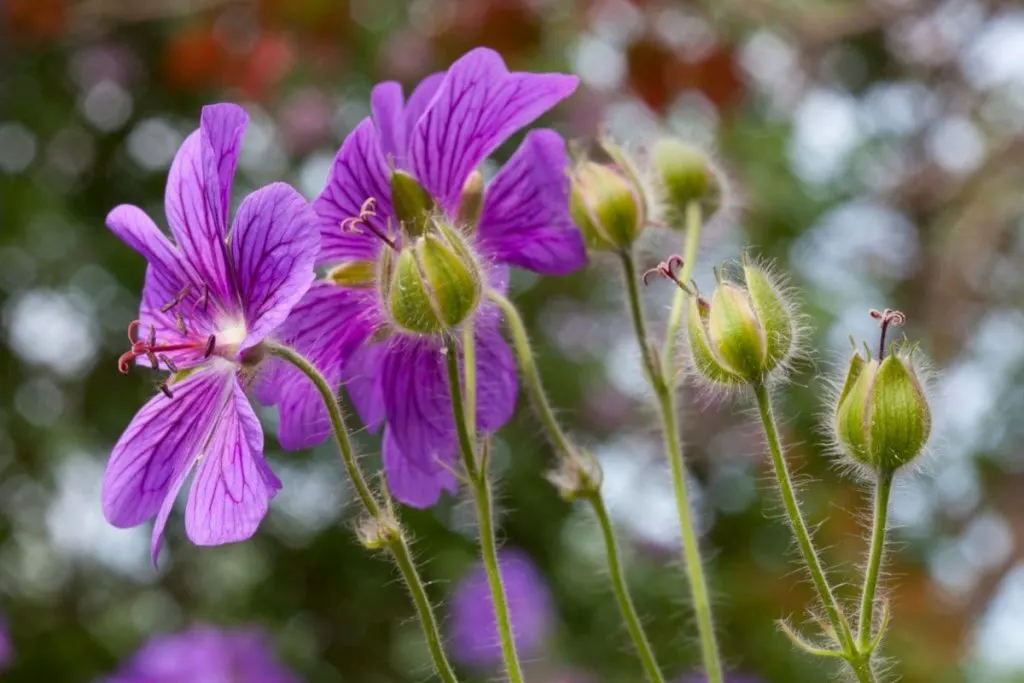
Geranium is another vibrant purple perennial plant that you’ll love having in your garden. Coming from northern America, it will succeed in any part of the USA since it’s a very low-maintenance plant. However, it grows the best in zones 8 to 10. Their maximum height is around 40 inches with the best possible care guide.
- Light conditions – The best light conditions for geranium plants are bright indirect light conditions. They can grow in a shade as well, but their color won’t be so vibrantly fresh and purple.
- Watering schedule – If you learn how to take care of the geranium plant, you’ll learn the care guide for the conical flowers as well. Water them once every 10 days with distilled or tap water.
- Soil type – Loose soil works best for these plants. Avoid acidic soil and loamy soils.
- Temperature – The best temperature ratio for these plants is between 60 and 70 F.
- Humidity – The best humidity ratio is between 40 and 50%.
- Propagation – The best way to propagate your geranium plant is from seeds. This is the most simple way to and the most effective one.
- Fertilizer – Apply 10-15-10 fertilizer on your geranium plant in the late spring and it will bloom all summer long for sure.
5. Phlox Perennials That Bloom All Summer
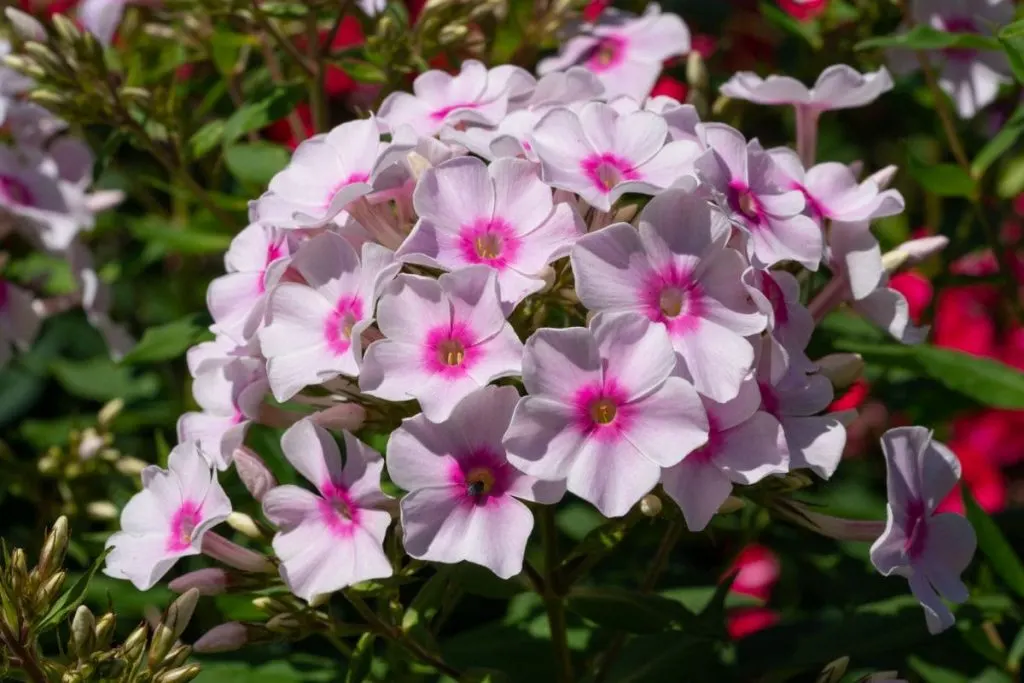
Phlox paniculata is an amazing plant native to New York – USA. Believe it or not, another amazing purple plant for your garden.
They grow well in many habitats now, not just those that are similar to their native habitat. Their maximum height is 50 inches with the best possible care guide.
- Light conditions – The best light for this plant is morning light with plenty of sun, and afternoon partial shade. Avoid full shade for these flowers because otherwise, they will not bloom well, especially in the summer when you expect them to bloom all the time.
- Watering schedule – When we talk about watering, rainwater or tap water is the best solution. Water this plant twice a week when the temperatures are very high.
- Soil type – When it comes to the best soil for this plant, black soil, as well as well-draining soil, are the best soils for this plant. The plant does not like clay, sand, and acidic soils.
- Temperature – The flower tolerates high temperatures well, much more than cold. Frost and cold do not suit her at all, and it will quickly show in her appearance.
- Humidity – Humidity is best when it is between 5% and 60 percent.
- Propagation – The best way to propagate this plant is by division.
- Fertilizer – The best fertilizer is organic matter-hummus or 10-10-10 fertilizer.
6. Lavender
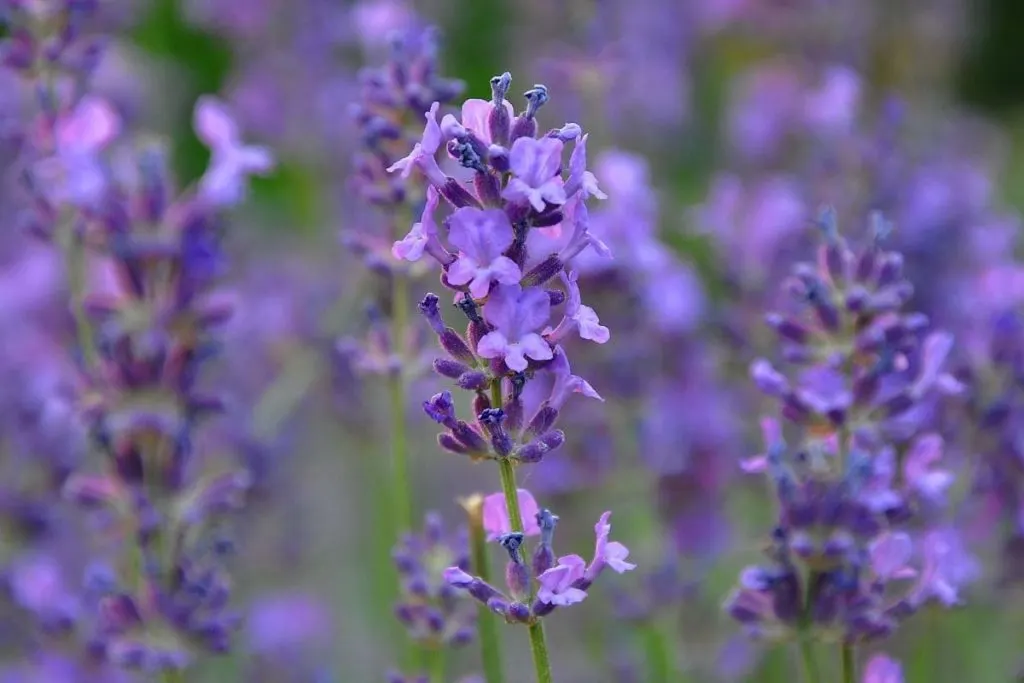
Lavandula plant is another amazing purple pant for your garden, native to California. You will enjoy its fragrance and its interesting look surely.
Aside from its amazing look and smell, the plant has lots of beneficial uses. If you plant them right, you will have an entire field of lavender plants in front of your home.
- Light conditions – Lavender plants need lots of direct sunlight in the morning and partial shade in the afternoon. This is the same for almost all purple plants – purple house plants and hanging purple flowers.
- Watering schedule – Their watering schedule is pretty simple. Water them once in 12 days since the young lavender plants especially don’t need lots of water. Rainwater and tap water are fine.
- Soil type – Lavender and most fuzzy flowers love sandy soils, loamy soils, and well-drained soil in hot temperatures conditions. They don’t like acidic soils at all.
- Temperature – Flowers will grow the best with temperatures between 60 and 70 F.
- Humidity – Lavender flowers don’t like much humidity. 40% is more than enough for them.
- Propagation – It’s best to propagate your lavender from the stem cuttings. They grow the best when they’re propagated like this.
- Fertilizer – They don’t need to be fertilized.
7. Coreopsis Perennials That Bloom All Summer
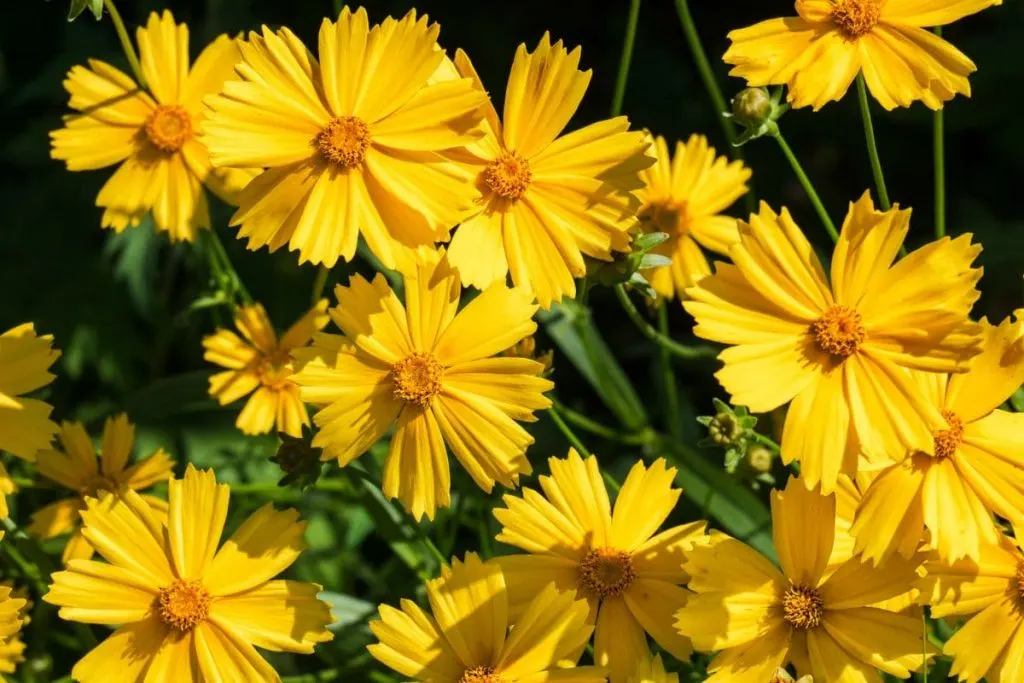
Coreopsis, the emperor’s eye grows naturally in the prairies and dry plains of North America. It belongs to the Asteraceae family.
This perennial is an ideal plant for every garden because it is not demanding in terms of cultivation, any garden soil is suitable for it, it is resistant to drought, and it blooms from summer until the first days of autumn.
- Light conditions
- Watering schedule
- Soil type
- Temperature
- Humidity
- Propagation
- Fertilizer
8. Allium
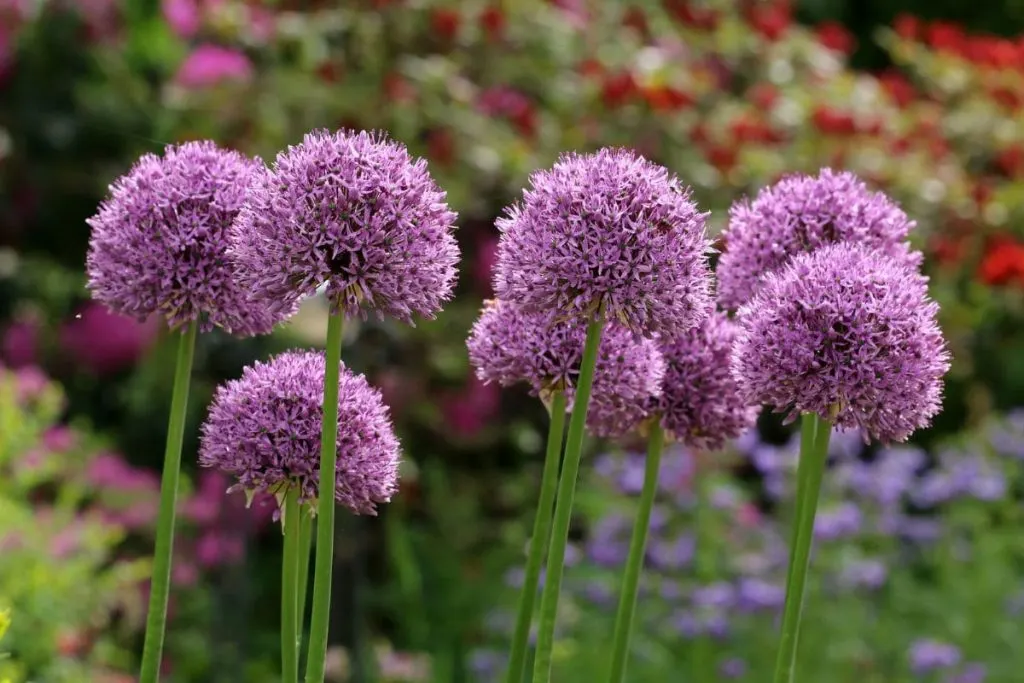
Allium scorodoprasum is spread in Central and Southern Europe, and in Eastern Asia. It grows on wet lawns and meadows, in vineyards, and along roads and forest edges.
In the past it was widely cultivated, today it is hardly known. It is propagated by bulbs and breeding bulbils.
- Light conditions
- Watering schedule
- Soil type
- Temperature
- Humidity
- Propagation
- Fertilizer
9. Blue Flowers Lupine
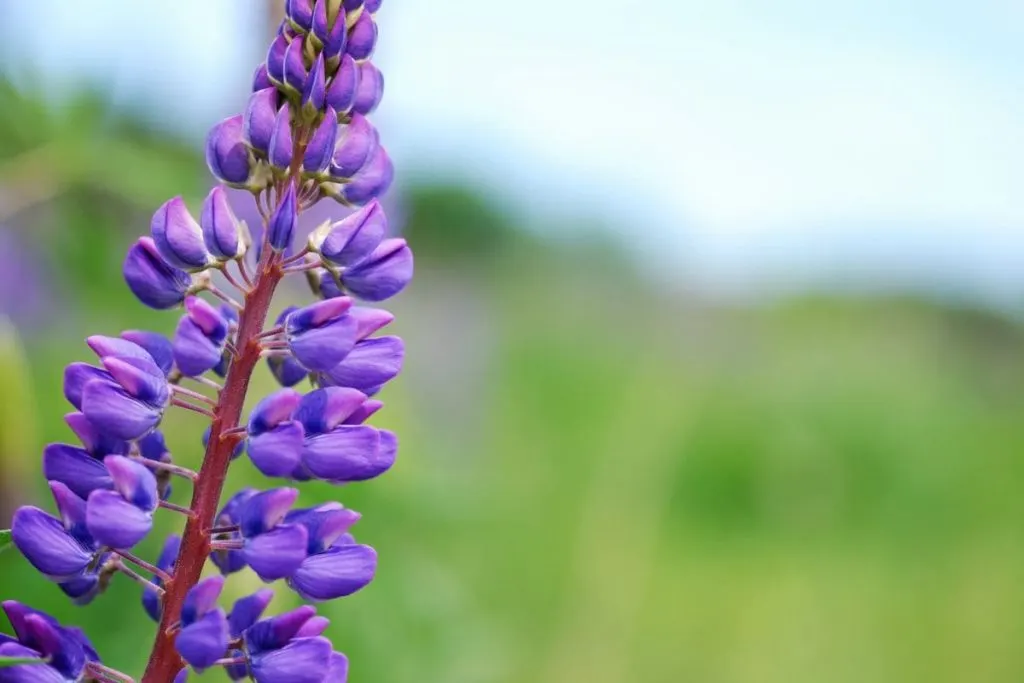
Lupine is a beautiful upright plant. The height of its varieties varies from 18 inches and more. The root system is flat, taproot, extending to a depth of 70 inches.
Lupine flowers’ stems grow lichen as they grow, and the leaves look like palm leaves, only the width differs. The flowers are elongated and brush-shaped. There are several flowers of different degrees of openness on each stem.
- Light conditions – It doesn’t like a lot of direct sun, especially in summer because the direct sun can easily kill it. However, this does not mean that you should plant it in the shade.Plant it in a place where it receives mild light and only a little morning sun.
- Watering schedule – The best water is definitely rainwater for this plant. Water it once every 8 to 10 days. Not a huge fan of tap water.
- Soil type – When it comes to the best choice of soil, loamy soils and not acidic soils will work the best with this plant.
- Temperature – Do not change the temperature of this plant much because it does not suit it at all. Her appearance changes very quickly when you do this, so it can lead to death. Between 65 and 75 F is best.
- Humidity – The humidity is best when it is in the middle, so 50%.
- Propagation – Propagate these plants by seed as this has proven to be the cheapest way for these plants.
- Fertilizer – Plants don’t necessarily need fertilizer unless they see that it needs something to boost their growth.
10. White Flowers Trillium
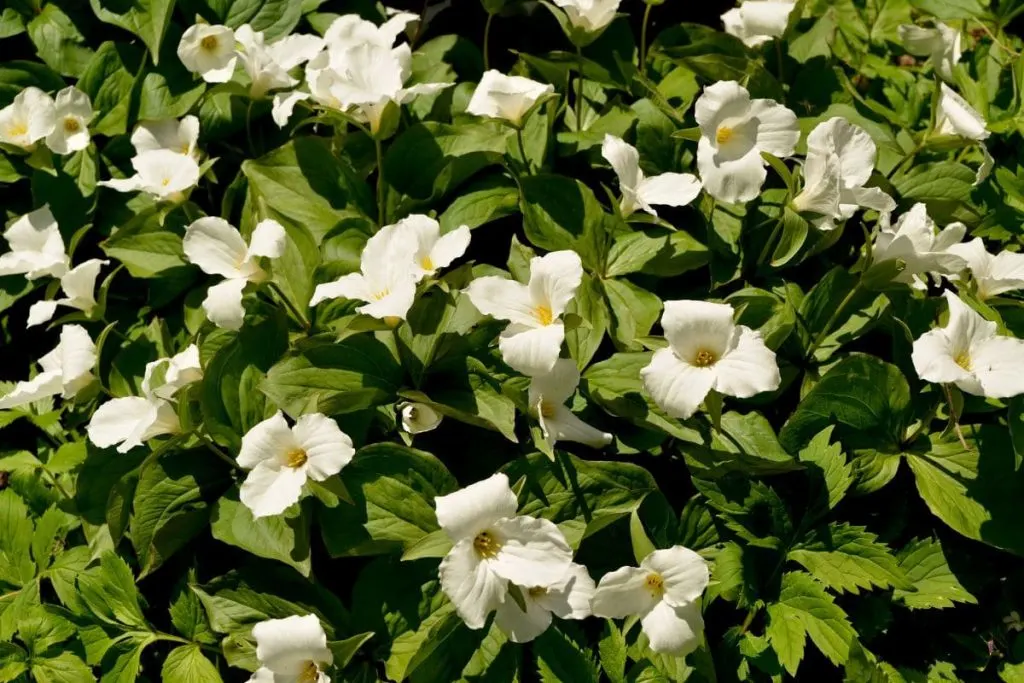
The plant’s name trillium derives from the fact that almost all parts of the plant come in threes – three leaves, three flower petals, three flowering characteristics, and tricot seeds.
Also, one interesting name for this plant includes the nightshade, which is said to be at the time of flowering, which usually appears with the arrival of spring robins.
- Light conditions – The light that best suits these flowers is between 4 and 6 hours of partial sun and mild sun in the afternoon.
- Watering schedule – When it comes to watering these plants, it is not complicated at all. Once in 8 days and the plants will grow normally.
- Soil type – When it comes to the soil, the plant is suitable for all soils except acidic soil. When you apply acidic soil, the plant does not develop normally and this can be seen in its appearance.
- Temperature – Temperature is a very important factor for this plant. Temperatures below 50 F do not suit it, so the best temperature ratio is between 55 and 70 F.
- Humidity – Humidity should be around 60% for this plant.
- Propagation – The best way to propagate these plants is with stem cuttings.
- Fertilizer – 10-10-10 or 15-15-10 fertilizers are the best option for these plants.
11. White Yarrow
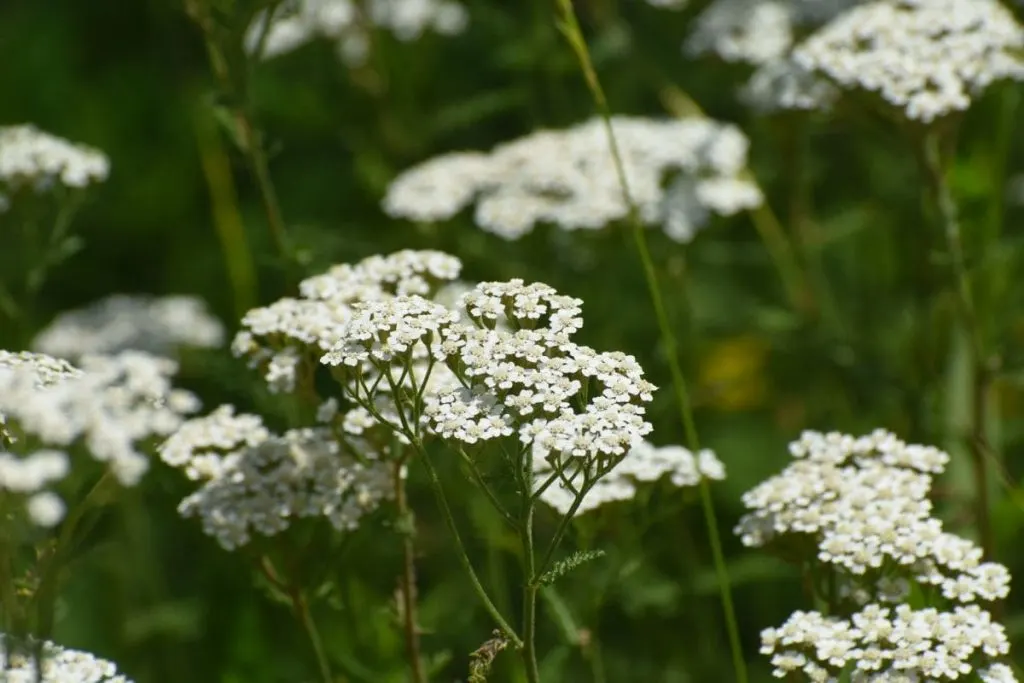
Achillea millefolium is a perennial herbaceous plant from the sedge family. The stem is erect, mostly simple, covered with woolly hairs, and growing up to 45 inches tall. The subject of the flower is horizontal.
The leaves are alternate, oblong, double, or pinnately divided into numerous small segments. You will enjoy its simple green color.
- Light conditions – The best choice for the light of the white yarrow plant is direct sunlight in the morning hours, at least 4 hours of direct sun per day. In the afternoon hours, partial shade is a good option for this yarrow flower.
- Watering schedule – The watering schedule for a white yarrow is very simple. Tap water or rainwater will do the best for this yarrow plant.
- Soil type – Recommended soil is loamy soil. Well-draining soil is also a big yes for these plants. Avoid acidic soils for these plants.
- Temperature – The best temperature ratio for a yarrow plant is between 55 and 75 F.
- Humidity – The humidity ratio should be between 40 and 50%. High humidity can easily kill this plant.
- Propagation – The best way to propagate your yarrow plant is by division. This has been shown as the most effective way of propagating the yarrow plant.
- Fertilizer – White yarrow is a plant that doesn’t have to be fertilized.
12. Rudbeckia
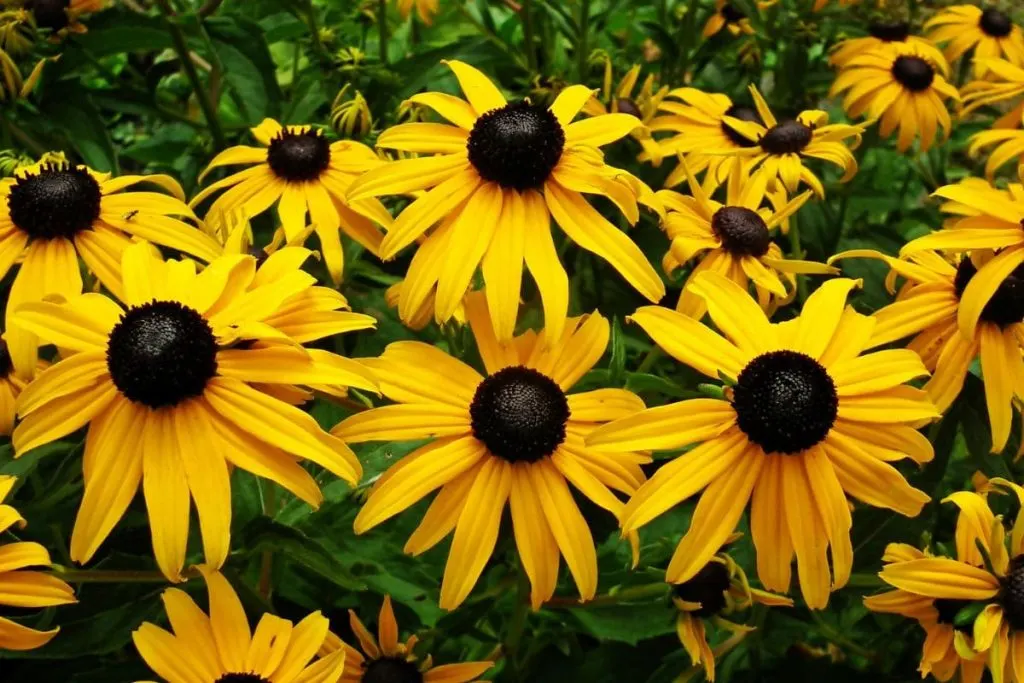
Rudbeckias are beautiful bright yellow decorations of our gardens. Their origin is from North America and they can be annual, biennial and perennial, short, and tall.
The flowers are yellow colored, with single, double, and multiple corollas. Today there are over 40 varieties.
- Light conditions – Rudbeckia flowers do not require a lot of sun. With a minimum of 2 hours of sun a day, it can still have a very nice fresh color and grow normally. In any case, avoid full shade for this plant.
- Watering schedule – Water it every 7-10 days with any water. The type of water is not important, but it is important whether the soil is wet when you water it again. It kills these flowers very quickly through the roots.
- Soil type – The type of soil is not very important for this plant. They will thrive in most soils if you give them enough water and sun.
- Temperature – They hate cold temperatures, even a bit colder than the ones this plant is used to. The best temperature ratio for this plant is between 55 and 65 F.
- Humidity – This plant doesn’t like humidity much. The best humidity level for this plant is 40%.
- Propagation – The best way to propagate this plant is by stem cuttings. This has been shown as the most effective way too.
- Fertilizer – Apply 12-6-6 slow-release fertilizer on your rudbeckia plant for better growth.
13. Catmint
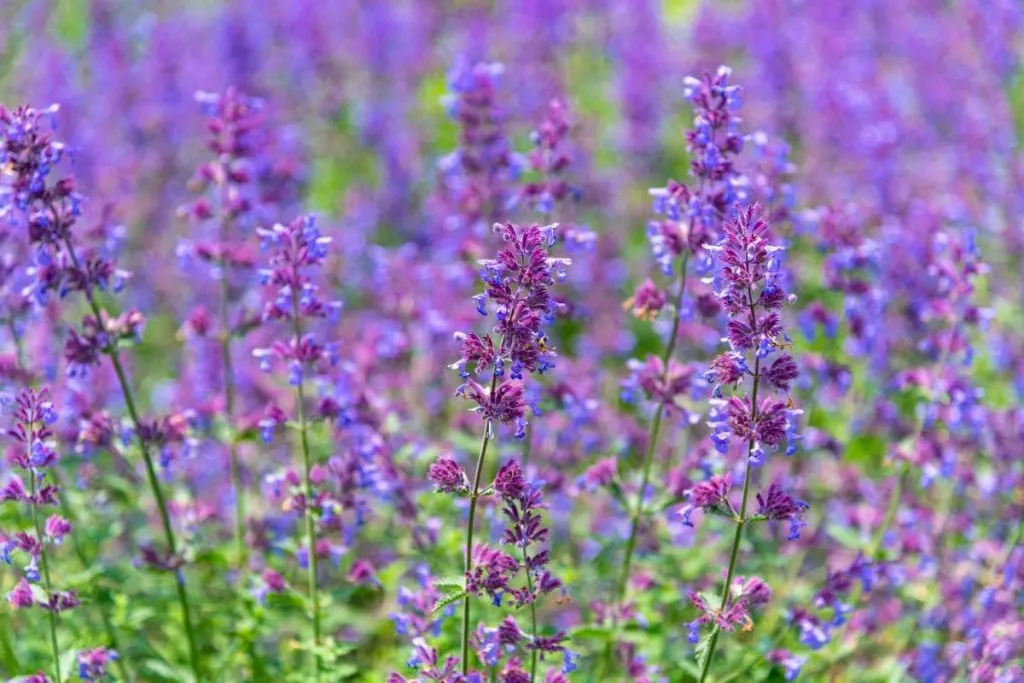
Nepeta cataria flowers are small, clustered in clusters at the tips of the stems. They are composed of a tubular calyx that has 5 teeth that are the same size as the corolla of the plant.
The wreath is made of a long tube and two white lips, of which the lower one is covered with red-pink dots, and the upper one is three-lobed. The plant is adored by cats, hence its name.
- Light conditions – Light conditions are very simple for the catmint plant. Direct sunlight for 3-4 hours and partial shade in the afternoon.
- Watering schedule – This plant doesn’t have to be watered a lot. Water it every 10 days to keep them growing and every 7 days in their blooming season-spring.
- Soil type – Catmint plants thrive in various types of soil, but mostly in rocky or clay soil.
- Temperature – The best temperature ratio is between 65 and 75 F.
- Humidity – The best humidity levels for these plants are 50 and 60%.
- Propagation – Propagate your catmint plant by stem cuttings or division.
- Fertilizer – The plant doesn’t require any fertilization.
FAQs About Perennials That Bloom All Summer

In the section below we bring you the most popular questions about perennials that bloom all summer long. Let’s check it out.
What Are The Best Perennial Plants?
This is more of a subjective thing. But some of the best perennial plants for your garden and home our: lavender, money plant, shasta daisy, coneflower, and others.
What Perennials Have Dark Green Foliage?
Some of the dark green foliage perennials are money plants, Russian sage, hardy geranium, coral bells, garden phlox, red hot poker, butterfly bush, etc.
What Are The Long Blooming Perennials All Summer Long?
The best long-blooming perennials are astilbe, catmint, black-eyed susan, and wood betony.
Final Thought On Perennials That Bloom All Summer
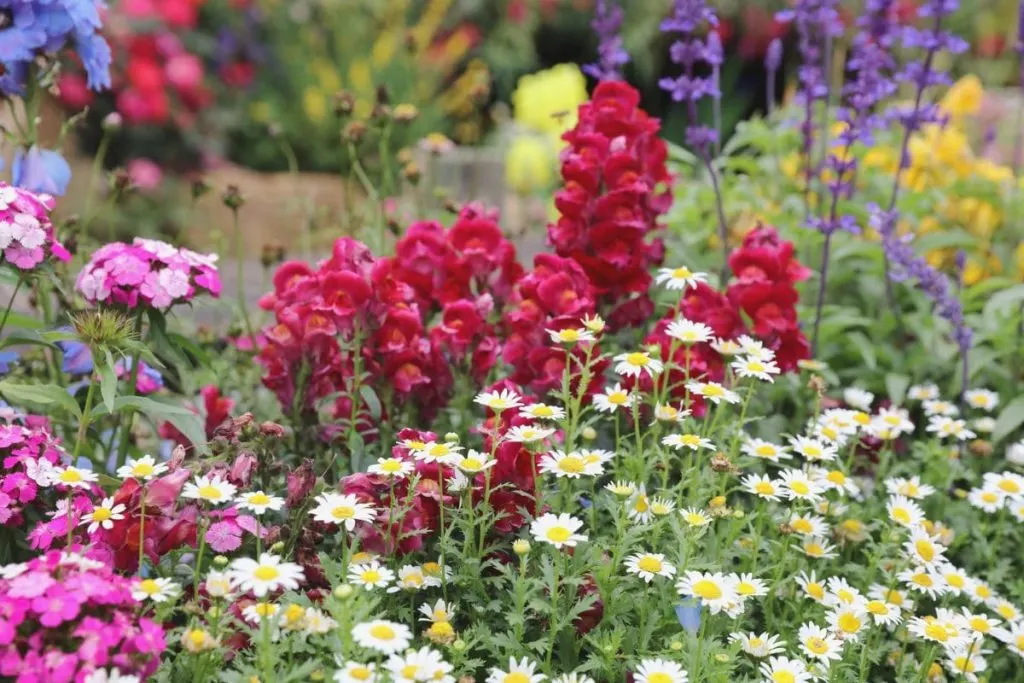
Today we learned about 13 perennials that bloom all summer in our article in detail. Perennial flowers that bloom all summer will spice up your garden this season.
Feathery flowers in well-drained soil with huge flowers, pink flowers, and yellow flowers will be one of the best flowering plants in your home.
Prepare your gardening toon for this late summer and even early fall season because these flowers last longer than you think. Prepare yourself as well for the great plant you’ll enjoy.
Hope you enjoyed today’s article, we wish you lots of long-lasting blooms.

